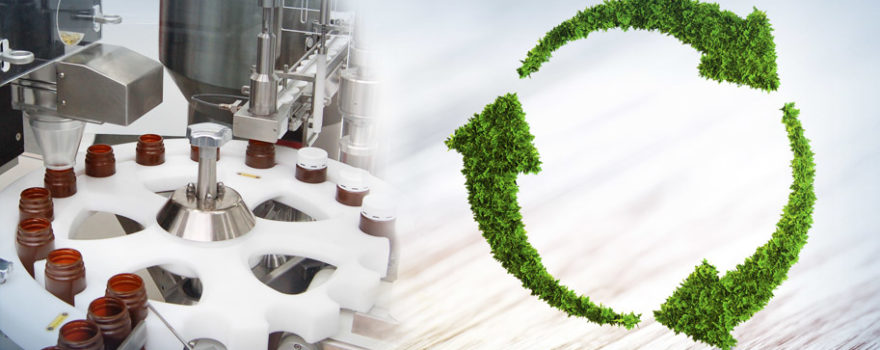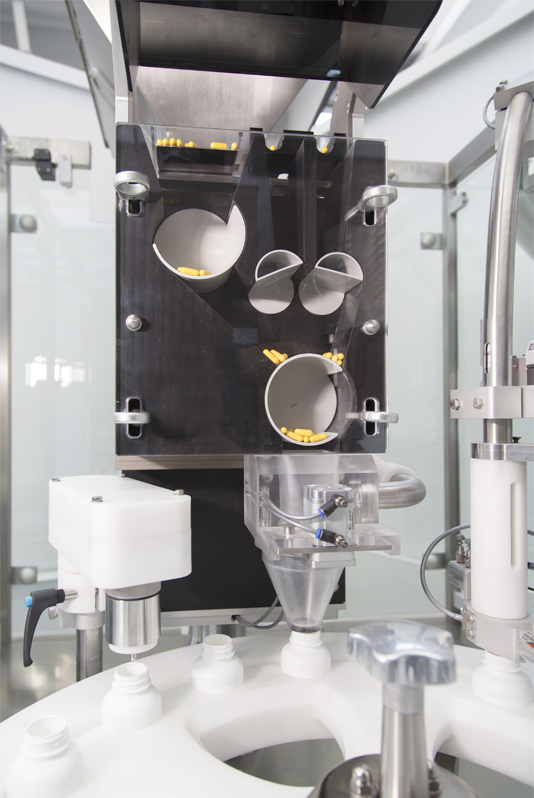
Packaging strongly influences purchasing choices, even in the pharmaceutical industry. The new consumer classes are much more sensitive to environmental issues and, consequently, more inclined to buy products packaged with recyclable materials. Pharmaceutical packaging, as shown by some recent studies, is one of the industries that is focusing more on green, both from a strategic and a social responsibility point of view.
In the last year, especially among our European customers, we have noticed a reversal of trend in the primary packaging of solid products. The decision to focus less on the blister and more on the bottle, which is less expensive and easier to recycle, is emblematic in a sector that is increasingly looking at economic and environmental sustainability, indispensable requirements for being forward-looking and competitive on the market.
Pharmaceutical packaging: the EU’s green turn
According to a report by Coherent Market Insights, a market intelligence and consulting firm, Europe will lead the growth of the global market for biodegradable pharmaceutical packaging between 2021 and 2027. Incentivizing the use of eco-friendly materials will be regulatory standards and current EU policies, which aim to achieve 100% sustainable packaging by 2030.
“The ecological transition, as indicated by the UN Agenda 2030 and the new European objectives for 2030, is the basis of the new Italian and European development model,” emphasizes the National Recovery and Resilience Plan (PNRR) of the Ministry of Economic Development, according to which Italy’s green turn can “be an important factor in increasing the competitiveness of our production system, encouraging the start-up of new and high value-added business activities and encouraging the creation of stable employment.”
New consumers prefer eco-sustainable packaging
According to research by the Harvard Business Review, 65% of millennials prefer to buy from companies that promote environmental sustainability. Recyclable and sustainable packaging is perceived as an act of responsibility towards the planet, it reinforces trust in the brand and increases its credibility, encouraging purchases.
A recent study by Market Watch states that the green packaging sector will increase by 60% by 2028, with a global growth of about 154 billion dollars. This expansion will also concern Italy where, as the GS1 Italy Observatory points out, the share of 100% recyclable packaging today stands at around 6.2%, but is destined to grow exponentially in the coming years. The choice of companies for packaging materials currently focuses on recycled paper and plastic.

Tecnomaco: machines that promote economic and environmental sustainability
As a leading manufacturer of packaging machinery for the pharmaceutical and nutraceutical sectors, we have the opportunity every day to deal with customers operating all over the world. In recent months we have noticed that many of our European customers have begun to prefer vials for the packaging of tablets, capsules and softgels, rather than plastic and aluminium blisters, which are less economical and more difficult to recycle because they are made of different materials.
It is no coincidence that since the beginning of the pandemic, the demand for counting machines has grown considerably in Europe. In this sector we boast a product with innovative features, which allows us to be extremely competitive on the market. This machine has a camera vision system, which allows images to be processed in real time and, unlike sensor-based counting systems, guarantees reliability and 100% accurate counting. In addition, it can handle plastic and glass bottles with a wide range of different closures.
Precision, combined with the possibility to customize our counting machines according to production needs and spaces, allows the customer to achieve greater efficiency and take into account future development possibilities in the production phase; to zero waste and optimize resources; to choose packaging materials that have a lower impact on the environment and provide greater guarantees to the final consumer.